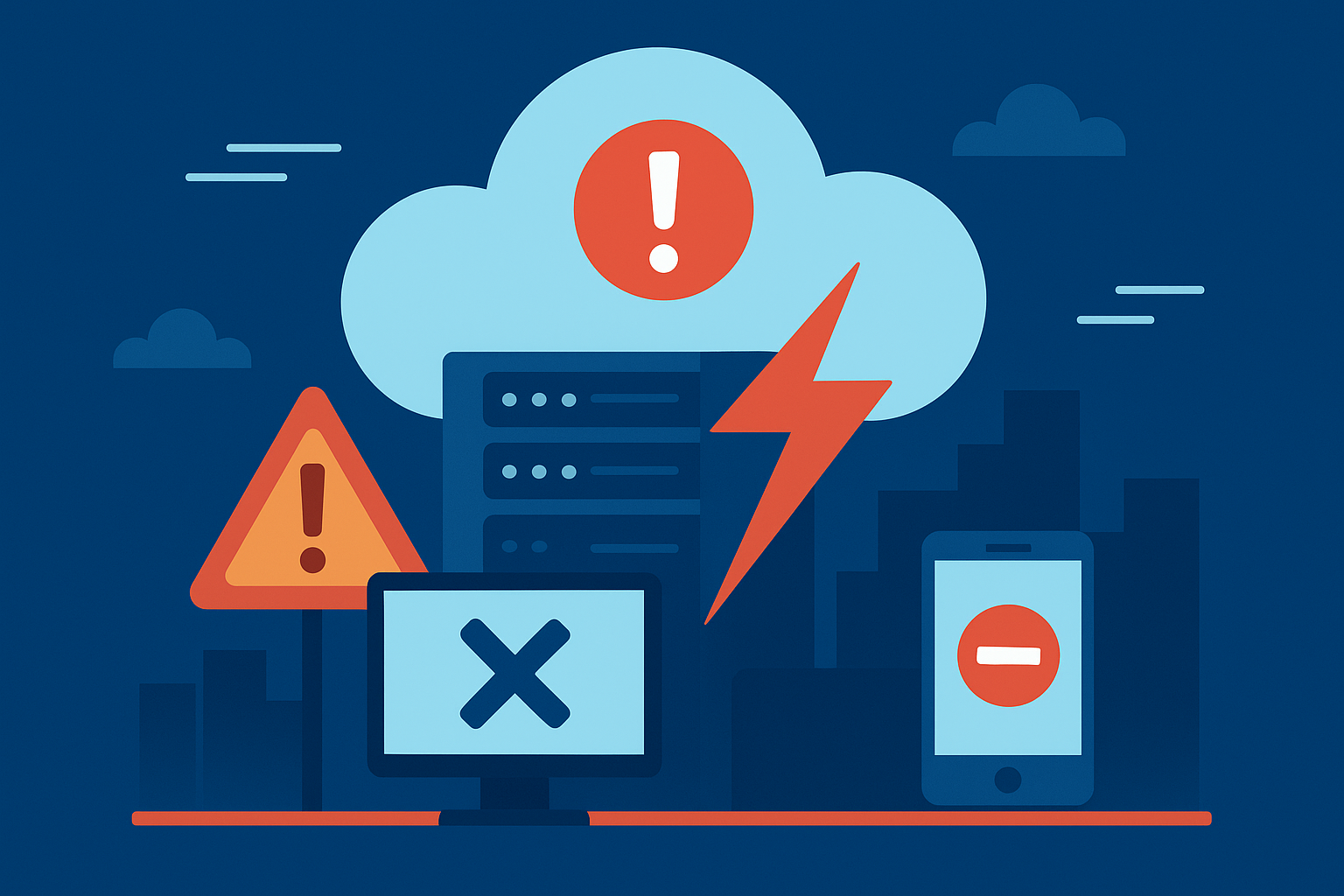When the world’s largest cloud provider stumbles, the digital economy feels it instantly. On Monday, Amazon Web Services (AWS) suffered a major outage in its critical U.S. East-1 region, temporarily disrupting access to some of the internet’s most heavily used platforms—including Snapchat, Fortnite, Reddit, and Amazon’s own retail operations. The Guardian reported that the disruption stemmed from issues in the platform’s DNS and database endpoints, sending ripples across industries that depend on AWS for core functionality.
The event is a stark reminder that even the most sophisticated cloud infrastructure remains vulnerable—and that reliance on centralized systems can become a single point of failure for entire ecosystems.
The Broader Implications for Cloud Dependence
Cloud computing has become the backbone of modern business, with Amazon Web Services, Microsoft Azure, and Google Cloud dominating a combined 65% of global market share (Canalys Q2 2025). Yet, Monday’s outage exposed how fragile this backbone can be. AWS’s U.S. East-1 region, located in Northern Virginia, serves as one of the world’s most trafficked cloud hubs, powering everything from app backends to e-commerce transactions and IoT systems.
According to data from Downdetector and AWS’s status page, the disruption lasted several hours before partial restoration. Although full service resumed later in the day, the economic and operational costs for dependent businesses—particularly e-commerce, fintech, and gaming—remain difficult to quantify. For investors, this raises deeper questions about how cloud resilience, redundancy, and multi-provider diversification are being managed across sectors.
Why This Matters for Investors
From an investment standpoint, the outage highlights both risk and opportunity.
Risk: Centralized cloud infrastructure remains a systemic vulnerability. Companies that rely heavily on a single provider, like AWS, could face material operational and reputational risks during outages. For example, previous AWS disruptions in 2021 caused productivity losses estimated at more than $150 million globally (IDC).
Opportunity: The same fragility could drive capital toward solutions that enhance resilience. Edge computing, hybrid-cloud frameworks, and multi-cloud orchestration are gaining traction as viable alternatives. Firms like Cloudflare ($NET), Akamai ($AKAM), and Fastly ($FSLY) could see tailwinds as businesses seek distributed solutions that minimize single-region dependencies.
Cloud Reliability Becomes the New ESG Metric
In a market increasingly driven by environmental, social, and governance (ESG) considerations, digital reliability is becoming an overlooked “fourth pillar.” As enterprises digitize their operations, investors are starting to treat cloud resilience as a form of infrastructure governance.
According to Gartner, global cloud infrastructure spending is expected to top US$750 billion by 2028, with redundancy and resilience investments accounting for nearly a quarter of incremental growth. Analysts at Morgan Stanley note that corporate boards are beginning to include “operational continuity” metrics in ESG disclosures, which could favor cloud vendors that demonstrate robust redundancy models.
Future Trends to Watch
- Rise of Edge Computing: Expect more data processing to move closer to users and devices, reducing dependence on central data centers.
- Multi-Cloud Adoption: Companies are increasingly diversifying across AWS, Azure, and Google Cloud—both for redundancy and pricing leverage.
- Infrastructure-as-Code Security: With more automation comes greater risk of misconfiguration; cybersecurity providers may see growing demand for cloud protection services.
Key Investment Insight
Investors should look beyond the headline outage to what it signals: an inflection point in cloud infrastructure evolution. The next wave of growth may come not from scaling larger data centers, but from scaling smarter—through distributed, secure, and resilient networks. Long-term exposure to companies that enable or secure cloud diversity could provide asymmetric upside as enterprise clients rebalance risk.
For now, AWS’s parent company Amazon ($AMZN) remains dominant, but Monday’s disruption underscores that dominance does not equal immunity. Cloud reliability will likely become a defining factor in valuations and investor confidence across the broader tech infrastructure landscape.
Stay tuned with MoneyNews.Today for the latest market-moving developments, sector insights, and investment intelligence shaping the future of technology and infrastructure.





